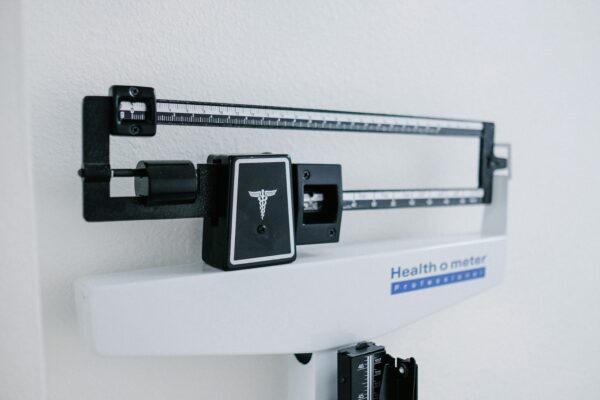(Adapted From Monitor Monday Podcast Segment from December 9, 2019 and article posted on RACMonitor https://www.racmonitor.com/early-warning-top-audit-risks-for-2020)
As we get ready to say goodbye to another year of audits and investigations, compliance officers around the country have or are working to determine their audit elements for calendar year 2020 in response to the Office of Inspector General (OIG) 2020 Work Plan and CMS’ audit initiatives for Medicare Administrative Contractors (MACs). The coming year promises to be another aggressive one, given the increase in Targeted, Probe and Educate (TPE) Audits, Unified Program Integrity Contractor (UPIC) Audits and desk audits initiated by the OIG. The biggest question is – what should the focus be on to identify and mitigate risk in 2020?
While there are literally a dozen that could be listed; these are my top three:
1. Evaluation and Management Services
Establishing “Medical Necessity” and “Clinical Justification” to support levels of service selected and billed remains critical. While most of the focus for internal and external auditors has been on Level IV Services, inpatient hospital (Admission and Subsequent Care) Services continue to remain an undervalued target for recoupment by providers and hospitals, which makes them vulnerable to attack.
a. Clustering levels of service or over-utilization of a specific level of service drives auditors to easily detect patterns. If providers fail to establish the medical necessity of the service which is defined “According to the Medicare glossary… medically necessary refers to: Health care services or supplies needed to diagnose or treat an illness, injury, condition, disease, or its symptoms and that meet accepted standards of medicine.” Pretty broad right? Based on that, denials for services failing to establish medical necessity should be rare. However, if you look deeper into Chapter 12 of the Medicare Claims Processing Manual and specifically, 30.6.1 – Selection of Level of Evaluation and Management Service (Rev. 3315, Issued: 08-06-15, Effective: 01-01-16, Implementation: 01-04-16) “Medical necessity of a service is the overarching criterion for payment in addition to the individual requirements of a CPT code. It would not be medically necessary or appropriate to bill a higher level of evaluation and management service when a lower level of service is warranted. The volume of documentation should not be the primary influence upon which a specific level of service is billed. Documentation should support the level of service reported. The service should be documented during, or as soon as practicable after it is provided in order to maintain an accurate medical record.”
In conclusion, ensuring that each date of service is specifically supported by the documentation is critical to ensure money received is retained.
2. Cloning and Clinical Plagiarism
The continued ease of copy and paste or carry forward increases the likelihood of a provider skating the system and utilizing methods auditors consider lacking, which impact the ability to establish “Medical Necessity” thus making these encounters prime targets for overpayment assessment.
a. Let’s take a look at a few examples:
i. According to The CMS, the word ‘cloning’ refers to documentation that is worded exactly like previous entries. This may also be referred to as ‘cut and paste’, copy and paste, or ‘carried forward.’ Cloned documentation may be handwritten, but generally occurs when using a preprinted template. While these methods of documenting are acceptable, it would not be expected the same patient had the same exact problem, symptoms, and required the exact same treatment or the same patient had the same problem/situation on every encounter. Authorship and documentation in an EHR must be authentic. Cloned documentation does not meet medical necessity requirements for coverage of services. Identification of this type of documentation will lead to denial of services for lack of medical necessity and recoupment of all overpayments made.
ii. Over-documentation is the practice of inserting false or irrelevant documentation to create the appearance of support for billing higher level services. Some PI Programs technologies autopopulate fields when using templates built into the system. Other systems generate extensive documentation on the basis of a single click of a checkbox, which if not appropriately edited by the provider, may be inaccurate. First Coast Service Options – “Documentation is considered cloned when each entry in the medical record for a patient is worded exactly alike or similar to the previous entries. Cloning also occurs when medical documentation is exactly the same from patient to patient. It would not be expected that every patient had the exact same problem, symptoms, and required the exact same treatment. Cloned documentation does not meet medical necessity requirements for coverage of services rendered due to the lack of specific, individual information. All documentation in the medical record must be specific to the patient and her/his situation at the time of the encounter. Cloning of documentation is considered a misrepresentation of the medical necessity requirement for coverage of services. Identification of this type of documentation will lead to denial of services for lack of medical necessity and recoupment of all overpayments made.”
3. Incident-To and Split/Shared Services
Without a doubt, Incident-to continues to be an area of extreme risk to providers and hospitals given the complexity of and vagueness within published guidelines. Questions surrounding what constitutes a “New Problem” or “Direct Supervision” and how is immediately available defined make the Risk/Reward disproportionate in this regulatory officer’s opinion.
CMS Terminology Defined
Immediately Available: CMS has clarified that “immediately available” means “without delay” so CMS considers “immediately available” to mean the supervising physician is in the office suite or patient’s home, readily available and without delay, to assist and take over the care as necessary.
Office Suite: An “office suite” is limited to the dedicated area, or suite, designated by records of ownership, rent or other agreement with the owner, in which the supervising physician or practitioner maintains his/her practice or provides his/her services as part of a multi-specialty clinic.
The services of the employee are covered when:
- The services are rendered under the direct supervision of the physician, CP, NP CNM, CNS, or in the case of a physician directed clinic, the Physician Assistant (PA).
- The services are furnished as an integral, although incidental, part of the physician’s, CP’s, NP’s, CNM’s or CNS’s professional services in the course of the diagnosis or treatment of an injury or illness.
- Billing ‘incident to’ the physician, the physician must initiate treatment and see the patient at a frequency that reflects his/her active involvement in the patient’s case. This includes both new patients and established patients being seen for new problems. The claims are then billed under the physician’s NPI.
- Billing ‘incident to’ the CP, NP, CNM, CNS or PA, the nonphysician practitioners may initiate treatment and see the patient at a frequency that reflects his/her active involvement in the patient’s case. The claims are then billed under the nonphysician practitioner’s NPI.
Direct Supervision
Direct supervision in an office setting does not mean that the physician, CP, NP, CNM, CNS, or in the case of the physician directed clinic, the PA (hereafter referred to collectively as the physician/nonphysician practitioner) be physically present in the same room as his/her/clinic employee. However, they must be present in the office suite and immediately available to provide assistance and direction throughout the time the employee is performing the services.
- In your office, qualifying ‘incident to’ services must be provided by a caregiver qualified to provide the service, whom you directly supervise, and who represents a direct financial expense to you (such as a W-2 or leased employee, or an independent contractor)
- You do not have to be physically present in the treatment room while the service is being provided, but you must be present in the immediate office suite to render assistance if needed
- If you are a solo practitioner, you must directly supervise the care
- If you are in a group, any physician member of the group may be present in the office to supervise
- Hospital or SNF
- For inpatient or outpatient hospital services and services to residents in a Part A covered stay in an SNF, the unbundling provision (1862)(a)(14) provides that payment for all services are made to the hospital or SNF by a Medicare intermediary (except for certain professional services personally performed by physicians and other allied health professionals)
- Incident to services are not separately billable to the carrier or payable under the physician fee schedule
- In institutions including SNF, your office must be confined to a separately identifiable part of the facility and cannot be construed to extend throughout the entire facility
- Your staff may provide service incident to your service in the office to outpatients, to patients who are not in a Medicare covered stay or in a Medicare certified part of an SNF
- If your employee (or contractor) provides services outside of your ‘office’ area, these services would not qualify as ‘incident to’ unless you are physically present where the service is being provided
- One exception is that certain chemotherapy ‘incident to’ services are excluded from the bundled SNF payments and may be separately billable to the carrier
Physician Directed Clinics
In clinics, particularly those that are departmentalized, direct personal physician/nonphysician practitioner supervision may be the responsibility of several physicians/nonphysician practitioners, as opposed to an individual attending physician/nonphysician practitioner. In this situation, medical management of all services provided in the clinic is assured. The physician/nonphysician practitioner ordering a particular service need not be the physician/nonphysician practitioner who is supervising the service. Therefore, services performed by the therapist and other aides are covered even though they are performed in another department of the clinic. The service would be billed under the NPI of the supervising physician/nonphysician practitioner.
While we are just scratching the surface on issues that create risk for medical practices and hospitals, paying close attention to the 3-biggest issues I’ve identified above should provide a good jumping off point for compliance monitoring and risk mitigation.
Sean M. Weiss is a Partner and serves as VP/Chief Compliance Officer for DoctorsManagement, LLC based in Knoxville, TN. DoctorsManagement, LLC services more than 20,000 clients nationwide and has been in existence since 1956. Weiss serves as an Investigator and expert witness in Federal and State cases as well as an expert or lead in Administrative Law Judge Hearings. During his 25-year career, Weiss has engaged in more than 200 cases working with law firms and health systems across the country. Weiss serves as a third-party compliance and regulatory officer for more than a dozen healthcare organizations across the country of varying sizes. For more information on Sean M. Weiss or DoctorsManagement, LLC visit us online at www.doctorsmanagement.com or contact us directly at 800.635.4040. You can also follow Sean on his biweekly Blog on LinkedIn (Sean M. Weiss “The Compliance Guy”) or at www.thecomplianceguyblog.com
What to do next…
- If you need help with an audit appeal or regulatory compliance concern, contact us at (800) 635-4040 or via email at [email protected].
- Read more about our: Total Compliance Solution
Why do thousands of providers trust DoctorsManagement to help improve their compliance programs and the health of their business?
Experienced compliance professionals. Our compliance services are structured by a chief compliance officer and supported by a team that includes physicians, attorneys and a team of experienced auditors. The team has many decades of combined experience helping protect the interests of physicians and the organizations they serve.
Quality of coders and auditors. Our US-based auditors receive ongoing training and support from our education division, NAMAS (National Alliance of Medical Auditing Specialists). All team members possess over 15 years of experience and hold both the Certified Professional Coder (CPC®) as well as the Certified Professional Medical Auditor (CPMA®) credentials.
Synergy – DoctorsManagement is a full-service healthcare consultancy firm. The many departments within our firm work together to help clients rise above the complexities faced by today’s healthcare professionals. As a result, you receive quality solutions from a team of individuals who are current on every aspect of the business of medicine.


























